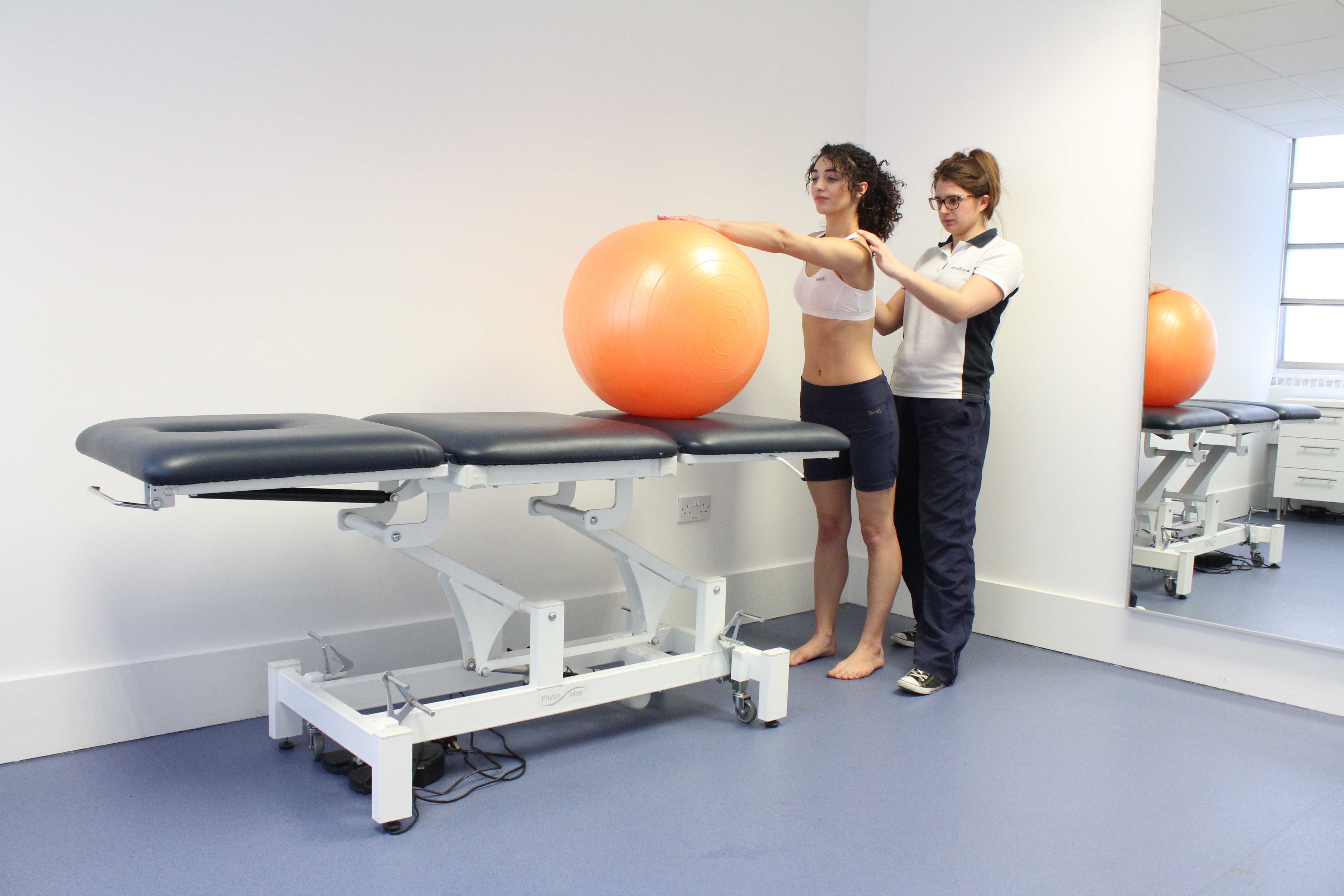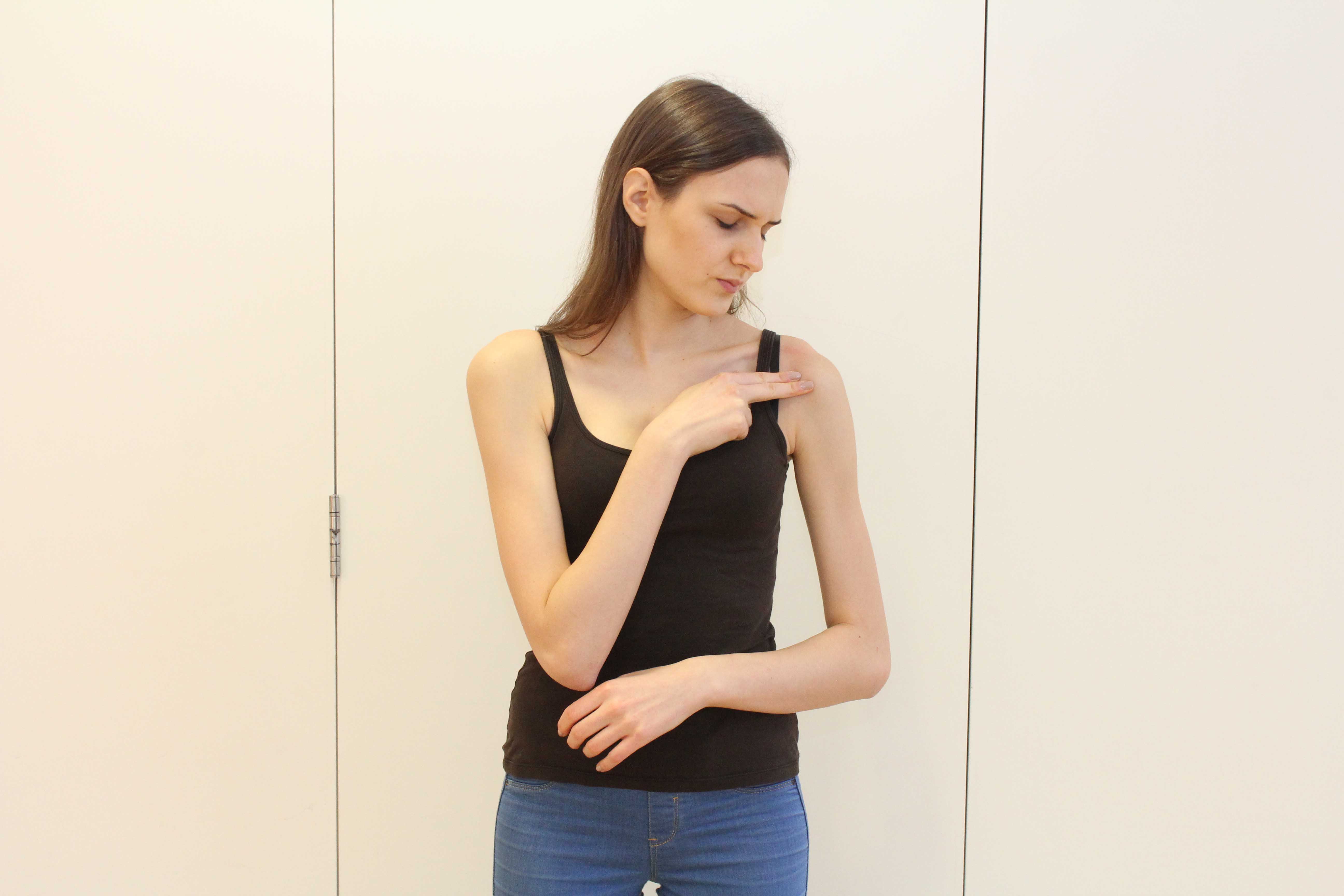What is an AC joint injury?
An acromioclavicular or AC joint injury refers to an injury to the joint between the end of your collar bone (clavicle) and the upper part of your shoulder blade (acromion). Physiotherapy is an important component of rehabilitation for an AC joint injury.
 Above: Gym ball assisted shoulder stretches under supervision of physiotherapist
Above: Gym ball assisted shoulder stretches under supervision of physiotherapistWhat are the causes of an AC joint injury?
The AC joint is commonly injured from an impact to the point of the shoulder. This impact may be with a stationary object, such as a wall or the floor, or with a moving object, such as an opponent during a sports match. The impact can push the top of the shoulder blade underneath the end of the collarbone. This can injure the capsule surrounding the AC joint and the ligaments which support the joint. It can also be injured by falling onto an outstretched hand.
What are the symptoms of an AC joint injury?
The first sensation felt when the AC joint is injured is pain on the top of the shoulder. This pain may be strong enough to stop you from using the injured arm and may cause you to cradle the arm close to your body. Depending on the severity of the injury, when you look at your injured shoulder there may be an obvious deformity or bump. This can be due to a displacement of the bones forming the joint or early bleeding and swelling around the injured structures.
 Above: Our skilled phyisiotherapists will help identify the cause of your shoulder pain.
Above: Our skilled phyisiotherapists will help identify the cause of your shoulder pain.Other symptoms include:
What should I do after an AC joint injury?
To control the amount of swelling and limit the damage to the injured tissues, the shoulder should be rested and iced. Rest involves ceasing to participate and limiting the use of the injured arm. If the pain is strong you may use a sling to support the arm and reduce the tension on the injured structures. Ice should be applied to the injured site for 15–20 minutes every 1–2 hours. Ideally, it should be applied using crushed ice wrapped in a damp cloth or towel. You should continue this until you consult Physio.co.uk. This should be done as soon as possible following the injury.
Physiotherapy for an AC joint injury.
Physiotherapy for an AC joint injury is very important. The physiotherapists at Physio.co.uk will be able to provide you with a determination of how long the injury is expected to take to heal and devise an appropriate treatment program. The latter may involve the use of a sling to help with your pain. Other treatments may include:
What shouldn’t I do after an AC joint injury?
In the first few days following AC joint injury, you shouldn’t undertake activities which increase blood flow to the injured tissues. This includes hot showers, heat rubs, massage, the consumption of alcohol and excessive use of your arm. These can prolong bleeding and exaggerate swelling resulting in further pain and a delayed recovery.
Are there any long-term effects of AC joint injuries?
It is advised that all AC joint injuries are fully assessed by a physiotherapist as a proportion of AC joint injuries can result in longer-term effects. In more serious injuries, recovery may be prolonged due to the extent and severity of damage to the injured tissues. Similarly, in more minor tears, recovery may be prolonged if the tear is not appropriately managed. This may result in ongoing shoulder pain and an increased risk of reinjury when you return to normal activities.
To arrange a physiotherapy appointment call Physio.co.uk on 0330 088 7800 or book online..

 0330 088 7800
0330 088 7800

































